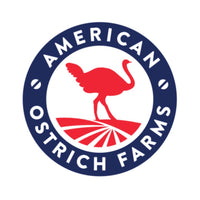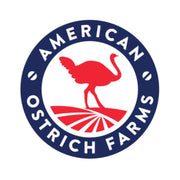A dog and a bone seem like a natural pairing, but you may have heard that bones can pose hazards. Bones that have been cooked, for example, can easily splinter, causing injury. Raw bones, if not properly handled, can transmit food-borne illnesses. Even bones sold in pet stores carry risks, especially if they have been chemically treated, contain additives like liquid smoke or sugar, or if they were heated in the manufacturing process.
That said, chewing is a natural behavior and bones can actually be beneficial to your pet’s health and wellbeing. Dog bones provide mental stimulation, help clean your dog’s teeth, provide vital nutrients, and encourage saliva production which helps to prevent the buildup of plaque.
Generally speaking, raw ostrich bones are safe for most dogs, so long as you’re feeding them the right ones. Bones taken from the lower leg of the ostrich are sturdy enough to withstand chewing and are filled with densely nutritious (and delicious) marrow. Collagen bones, commonly used to make bone broth, are thinner and more prone to cracking. For your pup’s safety, we only sell marrow dog bones in the pet section of our store.
While you should always consult with your veterinarian prior to deciding whether or not to give your dog bones, you can help protect your pet by following some basic precautions.
SUPERVISION IS KEY
Keep an eye on your dog anytime they’re gnawing a bone. This will allow you to intervene should the bone shatter or get worn down small enough to be swallowed. It is recommended to allow your dog to chew a bone for 10-15 minutes at a time, then take it away and store it for later.
SKIP THE TABLE SCRAPS
It is never recommended to give your dog bones that have been cooked, no matter how much they might beg beside the dinner table. The cooking process causes bones to become brittle, making them likely to break into sharp fragments that can cut dogs’ mouths or pose a choking hazard. Rib bones and pork bones are especially dangerous, even if raw, as they tend to be thin and more fragile. In addition to being dangerous, cooked bones will have been stripped of many of their beneficial nutrients.
CHOOSE THE RIGHT SIZE
A good rule of thumb is to give your dog bones that are at least as long as its muzzle. This will ensure they cannot swallow them whole. If your dog has gnawed a bone down to the point it could be swallowed, promptly take it away and throw it out. Never feed your dog bones that have been cut lengthwise, as these break easily.
KNOW YOUR DOG'S HABITS AND NEEDS
You know your dog better than anyone. If he or she is a particularly aggressive chewer, they are more likely to break bones and may be better off with a high-quality chew toy specifically designed to withstand intense gnawing. By waiting until after a meal to give your dog a bone, they will be less inclined to chew too hard or try to actually eat the bone. For dogs with sensitive stomachs or dental issues, bones may not be an appropriate treat.
PRACTICE SAFE HANDLING
Raw bones are generally safe for most dogs, but should be properly handled. Keep them frozen and thaw them one at a time. Disinfect any household surfaces they have come into contact with and make sure to avoid cross-contamination of kibble bowls. Store bones in the refrigerator between chewing sessions and be sure to throw them away after 3-4 days. Source raw bones from a butcher so you can be sure to trust their source and quality.
ADJUST FEEDING REGIMENS ACCORDINGLY
Raw bones may have meat, cartilage, and other soft tissue attached, and marrow bones are naturally high in fat. If you are feeding your dog marrow bones, make sure to adjust their diet accordingly. Marrow bones are not appropriate for dogs that require a low-fat diet.
BEWARE PROCESSED BONE TREATS
Many commercially available bone treats are highly processed and are quite different from the ones you can get from a butcher. These products are often smoked or baked, which can increase the likelihood of breakage. In addition, manufactured bone treats may contain preservatives, seasonings, and other additives which may not be suitable for your dog. Always consult with your vet to ensure you’re choosing appropriate products for your pet.






